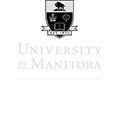
PRESENTERS
FABRICATING TRUTH
PALLAVI SWARANJALI, Carleton University
Forging Architecture: The Contronymic Nature of Architectural Creation in the work of
STEVEN BEITES, Laurentian University
KATIE GRAHAM, Carleton University
Architectural Storytelling in Virtual Reality: How VR Can Expand on Architectural Perception
TED LANDRUM, University of Manitoba
Poetry as Research: Fabricating Architectural Truth
FABRICATING IN SITU
SCOTT GERALD SHALL, Lawrence Technological University
Borrowed Intelligence: Leveraging Industrial Fabrication To Evolve Building Production
NAHID AHMADI, Carleton University
Asphalt Deserts: Rethinking the Architecture of Surface Parking Lots
DIETMAR STRAUB, University of Manitoba
A Beautiful Waste of Time: Operating a Snow Academy
The liberating environment of academia allows us to try out and then reject thousands of ideas. That is a process that no client will ever be willing to pay for. The
period spent studying landscape architecture and design is the perfect time to take risks and develop unconventional solutions while learning to follow – but also to
expand – the rules. This presentation raises fundamental questions like: Can design be taught? Why are we always so serious? Are designing and laughing a
contradiction in terms … or a dream team?
Plato founded an academy in an olive grove outside the gates of Athens. Here, he and his students enjoyed teaching, learning and wandering at leisure in the cool
shade of trees. The subjects taught were philosophy and science and the students called themselves academics. This great centre of learning, rich in trees, became
both a garden and a meeting place.
How to operate a ‘happy’ academy in a climate where people’s individual calendar is comprised by nine months of winter and three months of bad skating? What
could be more suitable for environmental fabricators than surveying ice and snow and developing a snow academy in this context?
For this Snow Academy, snow was initially gathered from parking lots, mainly due to the fact that this building material is cheap and abundant. Tons of this snow
was poured on a riparian clearing in an elliptical form. This classical shape acted as the white heart of the academy – radiating elegance and forming the centre for
additional snow structures. A field of columns as well as a generous ‘dining room’ complemented the peaceful setting. Thirteen bonfires in a late April night was a
way of saying good-bye in a dignified manner to this fleeting landscape. Gone, never to return!
JENNIFER SMITH, Auburn University
INCREMENTAL: Resilience through Disaster-Relief Housing
BRYAN HE, University of Manitoba
Making of the Hakka Vernacular
SOCIAL FABRICS
VALENTINA DAVILA, McGill University
Down the Back Stairs: Servants’ Spaces in Montreal’s Square Mile
LAWRENCE BIRD, Winnipeg
ELLEN GRIMES, School of the Art Institute of Chicago
History's Future Fabrics: New Models for Historic Ecologies
NIKOLE BOUCHARD, University of Wisconsin
RYAN STEC, Carleton University
Making Public Space: Examining Walter Lippmann & John Dewey’s pragmatism as a
constructive expansion to the spatial theory of public space
MEDIATING FABRICS
LANCELOT COAR, University of Manitoba
Lignes d’erre: Tracing the History and Future of Force Flow in Structures
FEDERICO GARCIA LAMMERS & JESSICA GARCIA FRITZ, South Dakota State University
Master Building Complex Forms in the Absence of Graphics
JOE KALTURNYK, Winnipeg
The Temporary and the Intermediate: Strategies for a Better Dinner
photo: Landon Lucyk [M2 Architecture]

The 2018 Atmosphere Symposium is co-chaired by: Lisa Landrum and Liane Veness with the support of the Faculty's Cultural Events Committee and the Centre for Architectural Structure and Technology (C.A.S.T.); web design and graphics support by Tali Budman (ED4 Architecture student), and administrative support from Brandy O’Reilly (Faculty of Architecture, Partners Program).
Questions? Please contact info@atmos.ca